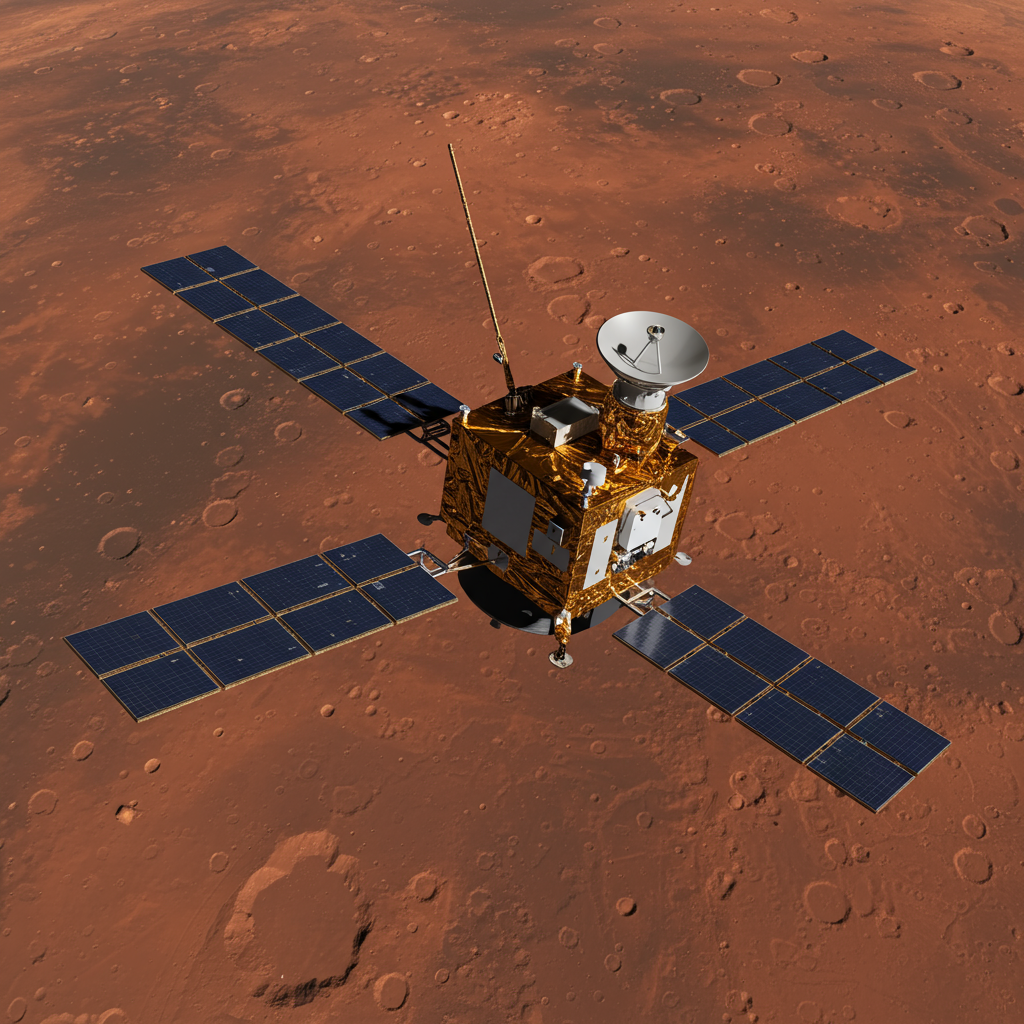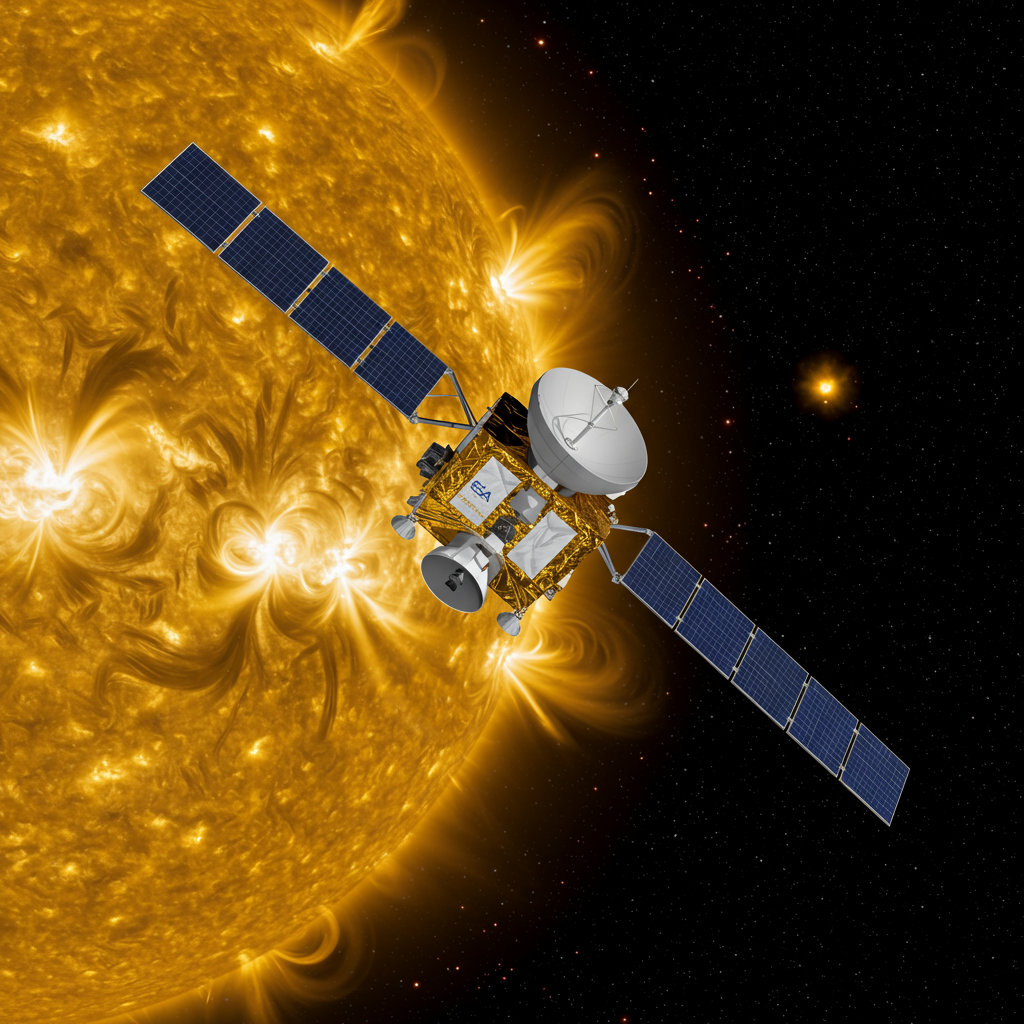After nearly two decades orbiting the Red Planet, NASA’s Mars Reconnaissance Orbiter (MRO) is proving you can teach an old spacecraft revolutionary new maneuvers. Launched in 2005 and arriving at Mars in 2006, MRO is one of the agency’s most vital assets, tirelessly studying Mars from above. Now, engineers have unlocked a surprising new capability, significantly enhancing one of its key instruments.
This adaptation involves a dramatic change in how the spacecraft positions itself. Traditionally, MRO would roll up to 30 degrees to point its instruments, like powerful cameras, towards specific targets on the Martian surface. However, a recently implemented series of “very large rolls“—tilting the entire orbiter up to 120 degrees—is opening up previously inaccessible views deep underground. This clever engineering feat allows MRO to squeeze even more groundbreaking science from its long-duration mission.
Unlocking Deeper Subsurface Secrets
The primary beneficiary of this bold new maneuver is MRO’s Shallow Radar instrument, known as SHARAD. This specialized radar is designed to penetrate the Martian subsurface, typically peering down about 1 to 2 kilometers (roughly half a mile to just over a mile). SHARAD is crucial for distinguishing between different materials below the surface, such as rock, sand, and crucially, ice.
Pinpointing the location and depth of water ice is a major scientific goal. It provides vital clues about Mars’ past climate and geological history. Furthermore, finding accessible ice is essential for planning future human missions, as it could potentially be processed into water and even rocket propellant for the journey home. SHARAD has been instrumental in this search for years.
Addressing a Design Challenge
Despite SHARAD’s power, its effectiveness was somewhat limited by the spacecraft’s original configuration. To optimize views for MRO’s forward-facing cameras, SHARAD’s two antenna segments were mounted at the back of the orbiter. In a standard orientation, parts of the spacecraft could partially obstruct SHARAD’s radar signals as they bounced off the subsurface.
This interference resulted in less clear data, particularly when trying to penetrate deeper layers. Gareth Morgan, a co-investigator on the SHARAD team from the Planetary Science Institute, noted that some key regions of Mars were frustratingly just out of SHARAD’s optimal reach. The team knew the instrument had more potential to unlock.
The Power of a 120-Degree Tilt
The solution devised by MRO engineers was counterintuitive but highly effective. By commanding the spacecraft to perform a “very large roll” of 120 degrees, they tilt the orbiter so drastically that the SHARAD antenna gains an unobstructed view directly downwards. This simple change in angle dramatically improves the radar’s performance.
The results were striking. Testing of the 120-degree rolls, conducted between 2023 and 2024 and detailed in a paper published in the Planetary Science Journal, showed an incredible improvement. The maneuver increases the strength of the returning radar signal by 10 times or even more compared to standard rolls.
This significant boost provides scientists with a much brighter and clearer picture of the Martian underground. Effectively, these large rolls open up entirely new regions of the subsurface for high-resolution exploration, allowing SHARAD to probe deeper and reveal more detailed geological layers and potential ice deposits. As Morgan puts it, “Not only can you teach an old spacecraft new tricks, you can open up entirely new regions of the subsurface to explore by doing so.”
Navigating the Complexities of Deep Space Rolls
Executing a 120-degree roll is far more complicated than the routine maneuvers MRO performs daily. Reid Thomas, MRO’s project manager at NASA’s Jet Propulsion Laboratory (JPL), highlighted that the spacecraft is uniquely designed for frequent rolling. However, these large rolls push the system to its limits.
Standard rolls are planned weeks in advance. An intricate algorithm coordinates the movement, ensuring the target instrument points correctly while also managing the spacecraft’s solar arrays to track the Sun for power and its high-gain antenna to maintain communication with Earth.
The “very large rolls” introduce significant challenges. During the maneuver, MRO’s main antenna is not pointed towards Earth, and its solar arrays cannot efficiently track the Sun. This requires careful pre-analysis to ensure the spacecraft’s batteries have sufficient power reserves to safely complete the roll and re-establish normal operations. Given these complexities and power constraints, MRO currently performs these large rolls only once or twice per year. Engineers are hopeful, however, that they can streamline the process in the future to allow for more frequent use of this powerful technique.
Adapting to Age: The Mars Climate Sounder Story
MRO’s adaptability isn’t limited to its groundbreaking large rolls. Another instrument, the JPL-built Mars Climate Sounder, has also found new ways to utilize the orbiter’s standard rolling capability. This radiometer is a critical tool for studying Mars’ atmosphere, monitoring subtle temperature changes, and observing phenomena like dust storms and cloud formations. Understanding atmospheric dynamics is crucial, particularly how wind-borne dust affects the surface and could pose risks to future astronauts.
The Mars Climate Sounder was designed with a gimbal to pivot independently for horizon, surface, and calibration views. However, as is common with spacecraft components after nearly two decades in the harsh environment of space, the gimbal became unreliable in 2024. Instead of losing valuable science time, the instrument team cleverly transitioned to relying on MRO’s standard spacecraft rolls to achieve the necessary viewing angles.
Armin Kleinboehl, the instrument’s interim principal investigator, noted this successful adaptation. Rolling used to restrict their science objectives, but now they have fully integrated it into their routine planning, ensuring the Mars Climate Sounder continues to provide invaluable data on Mars’ atmosphere and climate, all thanks to MRO’s inherent flexibility.
The ongoing success and remarkable adaptability of MRO, particularly highlighted by the implementation of the “very large rolls” for SHARAD and the reliance on standard rolls for the Mars Climate Sounder, underscore the incredible engineering and scientific collaboration that sustains long-duration missions. JPL manages MRO for NASA’s Science Mission Directorate, while SHARAD was provided by the Italian Space Agency, with operations led by Sapienza University of Rome and data analysis by a joint U.S.-Italian team involving the Planetary Science Institute. Lockheed Martin Space built and supports the spacecraft’s operations. MRO continues its vital work, revealing the secrets of Mars from orbit, now with new moves up its sleeve.
Frequently Asked Questions
How does NASA’s MRO perform large rolls after 20 years?
Despite launching in 2005, the Mars Reconnaissance Orbiter (MRO) was designed with the capability to roll up to 30 degrees for targeting. Engineers recently developed complex commands to push this limit to 120 degrees. This maneuver, tested between 2023 and 2024, involves tilting the entire spacecraft nearly upside down. The process requires careful planning and onboard algorithms to manage instrument pointing, power from solar arrays, and communication with Earth, though these large rolls temporarily impact power and communication links.
What is the main scientific benefit of MRO’s new maneuver?
The primary benefit is significantly enhancing the Shallow Radar (SHARAD) instrument’s ability to see deeper underground on Mars. By rolling 120 degrees, MRO moves spacecraft components that previously obstructed SHARAD’s signal path. This unobstructed view dramatically increases the radar signal strength by 10 times or more. The stronger signal provides much clearer images of subsurface structures, allowing scientists to access and explore regions previously out of SHARAD’s reach, which is crucial for finding water ice and studying Mars’ geology.
Why is finding water ice on Mars crucial for future exploration?
Locating water ice on Mars is vital for several reasons. Scientifically, it helps researchers understand Mars’ past climate, geological history, and potential for past or present life. For future human missions, accessible water ice is a critical resource. It could be used by astronauts for drinking water, life support, and potentially broken down into oxygen and hydrogen to create rocket propellant for their return journey to Earth. Finding convenient, near-surface ice deposits is a key step in making future human missions to Mars feasible.
—




